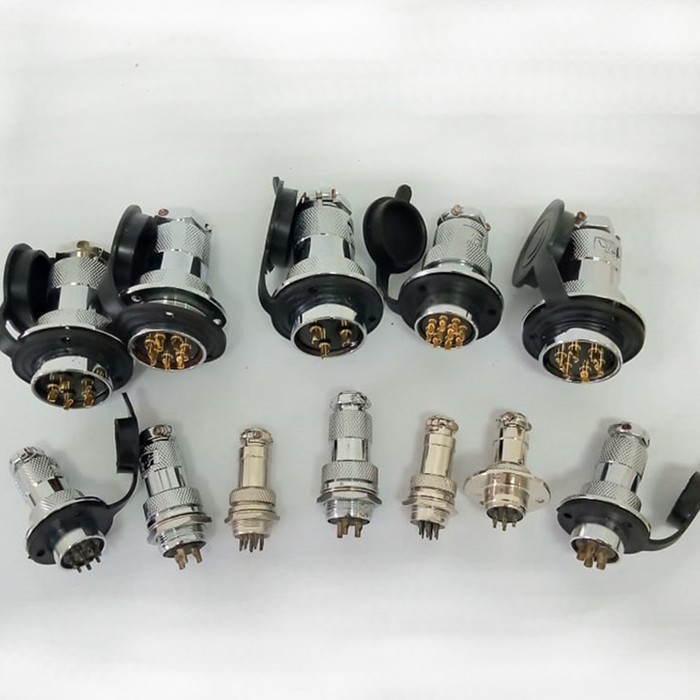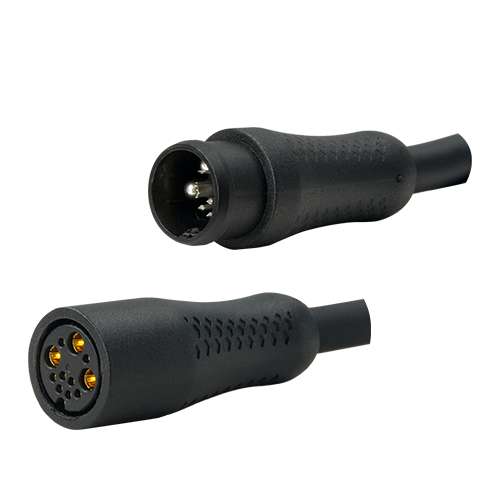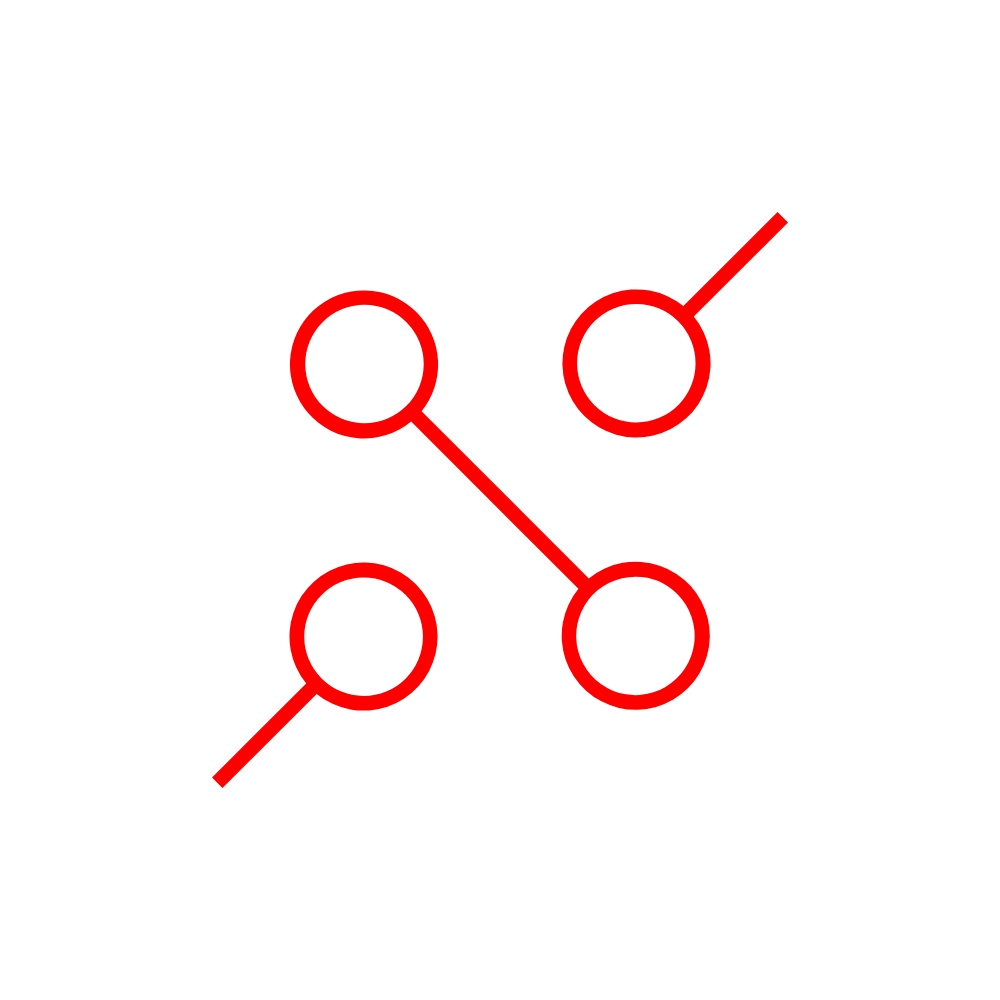Circular Connectors: Feature Insights for Better Choices

Understanding the features of a circular connector is crucial for making informed decisions in various applications. These connectors, known for their rugged design, can handle diverse contacts, voltages, and currents. Their ability to withstand shock and vibration makes them ideal for demanding environments. The market for circular connectors is expanding, with projections reaching $114.7 billion by 2030. This growth underscores the importance of selecting the right connector to meet specific needs, ensuring efficiency and reliability in performance. For instance, the m12 quick disconnect to dual m8 offers versatility in industrial settings, highlighting the need for careful feature consideration.
Overview of Circular Connectors
Circular connectors have become indispensable components in various industries due to their robust design and versatility. These connectors, characterized by their cylindrical shape and multi-pin configuration, ensure reliable connections in demanding environments.
Evolution of Circular Connectors
Circular connectors emerged in the 1930s, initially developed to meet the rigorous demands of aeronautical and tactical service applications. The U.S. Military adopted these connectors, gaining a technological edge during World War II with their mission-critical aircraft. Over the decades, technological advancements have driven the evolution of circular connectors, making them essential for ensuring reliable and efficient connections in complex, high-performance environments. Today, they continue to adapt to meet the growing efficiency demands of new applications, such as automation and medical technologies.
Common Applications
Circular connectors find applications across various sectors, each benefiting from their unique advantages.
Industrial Use
In industrial settings, circular connectors provide flexibility and durability. They withstand harsh conditions, ensuring secure connections for machinery and equipment. Their ease of installation and use makes them ideal for environments where reliability is paramount.
Military and Aerospace
The military and aerospace sectors rely heavily on circular connectors for their robustness and ability to handle extreme conditions. These connectors ensure consistent performance in mission-critical applications, providing secure connections for communication and control systems.
Consumer Electronics
In consumer electronics, circular connectors offer versatility and protection. They connect and transmit signals efficiently, supporting the functionality of devices ranging from smartphones to home appliances. Their compact design and ease of use make them a popular choice in this fast-evolving industry.
Key Features of Circular Connectors

Circular connectors offer a range of features that make them suitable for various applications. Understanding these features helps in selecting the right connector for specific needs.
Design and Construction
The design and construction of circular connectors play a crucial role in their performance and durability. These connectors typically feature a cylindrical shape, which allows for easy engagement and disengagement. The design also facilitates environmental sealing, making them ideal for harsh conditions.
Material Considerations
Manufacturers use different materials to construct circular connectors, each offering unique benefits. VULCON™ metric circular connectors, for instance, use robust materials that conform to the DIN EN 61076 standard. This ensures a waterproof interface, making them suitable for demanding applications. The choice of material impacts the connector's resistance to corrosion and mechanical stress, enhancing its longevity.
Environmental Resistance
Circular connectors are designed to withstand extreme environmental conditions. They often feature ruggedized and shielded designs to protect against EMI/RFI interference, dirt, water, and temperature variations. Harsh Environment Connectors (HEC) exemplify this with their UV resistance and high mechanical load capability, ensuring reliable performance in challenging settings.
Coupling Mechanisms
Coupling mechanisms in circular connectors ensure secure connections and prevent accidental disconnection. Different mechanisms offer varying levels of security and ease of use.
Threaded Coupling
Threaded coupling provides a secure connection by screwing the male and female parts together. This mechanism is common in applications requiring a strong and stable connection, such as in VULCON™ metric circular connectors. The screw threads ensure a tight seal, preventing moisture and contaminants from entering.
Bayonet Coupling
Bayonet coupling offers a quick and reliable connection through a simple push-and-twist action. This mechanism is ideal for applications where frequent connection and disconnection are necessary. It combines ease of use with a secure fit, making it popular in military and aerospace applications.
Polarization and Keying
Polarization and keying prevent incorrect mating of connectors, ensuring that connections are made correctly every time. This feature is critical in applications where precise alignment is necessary to maintain signal integrity and prevent damage to the connector or equipment. By incorporating unique keying patterns, manufacturers ensure that connectors can only mate with their corresponding counterparts, reducing the risk of errors.
Contact Count and Arrangement
Circular connectors offer a variety of contact counts and arrangements, catering to diverse application needs. The contact count refers to the number of electrical connections a connector can support. This feature is crucial in determining the connector's capability to handle multiple signals or power lines simultaneously. For instance, Harsh Environment Connectors (HEC) provide an 8-pin version that combines signal and power contacts, optimizing space while maintaining high performance. Such hybrid designs enable both power and signal supply through a single connector, enhancing efficiency in complex systems.
The arrangement of contacts within a circular connector influences its functionality and reliability. Manufacturers design these arrangements to ensure optimal signal integrity and minimize interference. The cylindrical shape of circular connectors allows for a compact and efficient layout, which is particularly beneficial in applications with limited space. This design also facilitates easy engagement and disengagement, making circular connectors a preferred choice in industries where quick and reliable connections are essential.
Current and Voltage Ratings
Understanding the current and voltage ratings of circular connectors is vital for ensuring compatibility with specific applications. These ratings indicate the maximum electrical load a connector can safely handle without compromising performance or safety. Circular connectors, such as the VULCON™ metric circular connectors, are designed to accommodate a wide range of voltages and currents, making them versatile for various industrial and commercial uses.
The materials and construction of circular connectors play a significant role in determining their electrical ratings. High-quality materials, like those used in Easy Locking Connector (ELC), ensure durability and biocompatibility, meeting the stringent standards required in medical equipment. These connectors must demonstrate contact dependability and signal integrity, especially in sensitive applications where reliability is paramount.
Comparison of Popular Circular Connectors
Circular connectors play a crucial role in various industries, offering robust and reliable connections. Among the most popular types are the MIL-DTL-5015 and MIL-DTL-38999 connectors. Each type has distinct features and applications, making them suitable for specific needs.
MIL-DTL-5015
Features and Applications
The MIL-DTL-5015 connector stands out for its durability and versatility. It features a rugged design that can withstand harsh environments, making it ideal for military and industrial applications. This connector supports a wide range of contact sizes and configurations, allowing for flexibility in design. Its threaded coupling mechanism ensures a secure connection, preventing accidental disconnection during operation. The MIL-DTL-5015 is commonly used in aerospace, ground support equipment, and heavy machinery, where reliability and performance are paramount.
MIL-DTL-38999
Features and Applications
The MIL-DTL-38999 connector is renowned for its high-density contact arrangements and lightweight construction. It offers superior performance in environments requiring high reliability and minimal space. This connector features a bayonet coupling mechanism, providing quick and secure connections. Its design includes environmental sealing, protecting against moisture and contaminants. The MIL-DTL-38999 is widely used in military and aerospace applications, where it supports critical systems such as avionics and communication equipment. Its ability to handle high-frequency signals makes it a preferred choice in advanced technological settings.
Key Differences and Suitability
When comparing the MIL-DTL-5015 and MIL-DTL-38999 connectors, several key differences emerge. The MIL-DTL-5015 excels in applications requiring robust and versatile connections, thanks to its durable construction and flexible design options. In contrast, the MIL-DTL-38999 offers high-density contact arrangements and lightweight design, making it suitable for applications where space and weight are critical factors.
Comparative Insight: Circular connectors like the MIL-DTL-5015 and MIL-DTL-38999 provide design flexibility and robust performance, making them ideal for high-power or signal connections. Their compact design allows for efficient use of space, a significant advantage over rectangular connectors in certain applications.
Choosing the Right Circular Connector
Selecting the appropriate circular connector involves a thorough understanding of the specific requirements of the application. This process ensures that the chosen connector will perform optimally under the given conditions.
Assessing Application Requirements
Environmental Conditions
Environmental factors play a crucial role in determining the suitability of a circular connector. Users must consider the operating environment, including temperature extremes, moisture levels, and exposure to chemicals or dust. For instance, connectors used in outdoor or industrial settings require robust environmental sealing to prevent damage from harsh conditions. The choice of materials, such as stainless steel or aluminum, can enhance resistance to corrosion and mechanical stress, ensuring longevity and reliability.
Electrical Specifications
Understanding the electrical specifications is vital for selecting the right connector. Users should evaluate the current and voltage ratings to ensure compatibility with the application's power requirements. Circular connectors, like the MIL-DTL-5015, are often preferred for high-current applications due to their durable construction. In contrast, the MIL-DTL-38999 offers high-density contact arrangements, making it suitable for applications requiring efficient signal transmission in compact spaces.
Evaluating Connector Features
Evaluating the features of circular connectors involves examining their design, coupling mechanisms, and contact arrangements. The choice between threaded and bayonet coupling depends on the need for secure connections versus ease of use. Threaded couplings provide a strong seal, ideal for environments where stability is critical. Bayonet couplings offer quick and reliable connections, beneficial in applications requiring frequent disconnection. Additionally, the contact count and arrangement should align with the application's signal and power needs, ensuring efficient performance.
Considerations for Future-Proofing
Future-proofing involves anticipating changes in technology and application requirements. Users should consider connectors that offer flexibility and adaptability to accommodate future upgrades. Selecting connectors with higher contact counts or modular designs can provide room for expansion. Furthermore, choosing connectors with advanced materials and construction techniques can enhance durability and performance, ensuring they remain relevant as technology evolves.
Understanding the features of circular connectors is crucial for making informed decisions. These connectors offer reliability and adaptability, making them suitable for various applications. By considering these insights, users can select connectors that meet their specific needs, ensuring optimal performance and longevity. Circular connectors, with their robust design and versatility, continue to evolve alongside technological advancements. Their ability to withstand harsh conditions and provide stable connections makes them indispensable in industries like aerospace and automation. Choosing the right connector enhances efficiency and reliability, ultimately impacting the success of any application.
See Also
Top 11 Technology Innovations Shaping The Connector Sector
Discovering ZH23 Series Connectors: Optimal Performance Solutions
In-Depth Guide to Various Cable and Connector Types
